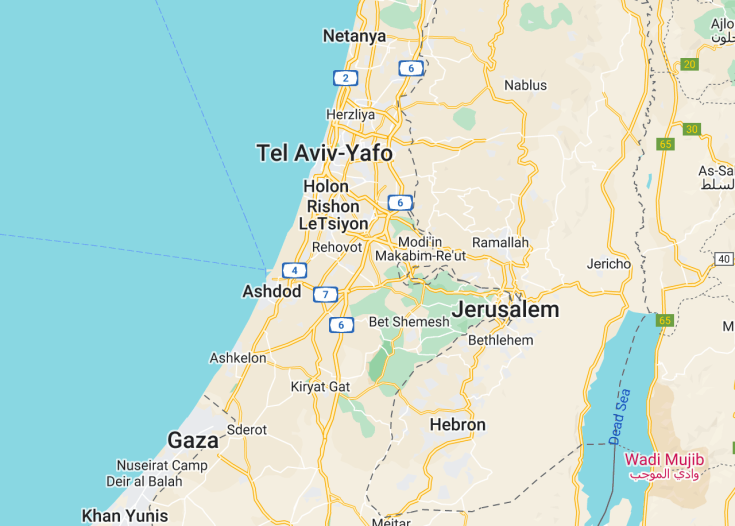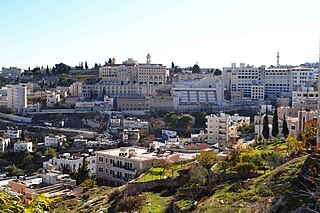Steeped in millennia of history, Palestine stands at the crossroads of civilizations, weaving together tales of faith, resilience, and culture. Its terraced olive groves, ancient cities, and revered religious sites evoke a poignant sense of timelessness. Bethlehem’s Nativity Church, Hebron’s Ibrahim Mosque, and the resilient spirit of Ramallah are but a few of the myriad stories waiting to be discovered. Amidst the complexities of geopolitics, the soul of Palestine is reflected in its hospitable people, their shared narratives, and a deep-seated hope that prevails against all odds.
When visiting religious sites, dressing modestly in respect to local customs is highly recommended to ensure a respectful experience.
Engage with local guided tours, as they offer invaluable insights into historical context and cultural nuances of the region.
Top destinations in Palestine
Palestine: a land of cultural richness
| Capital | Ramallah (administrative), Jerusalem (claimed) |
| Time in Palestine | GMT +2 |
| Language spoken | Arabic |
| Population | 5.1 million (Source: UN, 2021) |
| Religion | Islam (85%) Christianity (10%) Others (5%) |
| Currency | Israeli new shekel (₪, ILS) and Jordanian dinar (JD, JOD) |
| Airports | Gaza International Airport (currently non-operational) Yasser Arafat International Airport (currently non-operational) |
Palestine, historically known as the Land of Canaan, embodies an intricate web of faith, culture, and history. Situated at the crossroads of three continents – Africa, Asia, and Europe – this land has been a coveted prize for myriad empires and civilizations. From the ancient Canaanites to the Byzantines, from the Crusaders to the Ottomans, Palestine’s story is a chronicle of faiths converging and civilizations clashing. The birthplace of both Judaism and Christianity, it also holds significance for Islam, with sacred sites that resonate deeply across these Abrahamic religions. Its geopolitical importance is undiminished, but its true essence lies in its spiritual and cultural heritage that has influenced the world.
Where is Palestine located?
Palestine is located in the Eastern Mediterranean, bordered by Israel, Jordan, and Egypt, and encompasses the West Bank and the Gaza Strip.
What is Palestine famous for?
Palestine is renowned for its sacred sites pivotal to Judaism, Christianity, and Islam, including the Al-Aqsa Mosque, Church of the Holy Sepulchre, and the historic city of Bethlehem.
History
Canannites and Ancient Kingdoms: c. 3000 BC – 586 BC
Palestine’s history begins with the Canaanites, the earliest known inhabitants of the region. This Bronze Age civilization had trade networks and was known for its unique language and script. Over time, kingdoms such as Israel and Judah emerged. Iconic rulers like King David and King Solomon left indelible marks, establishing Jerusalem as a central city of worship and governance.
Babylonian and Persian Rule: 586 BC – 332 BC
The Babylonian conquest in 586 BC resulted in the destruction of the First Temple in Jerusalem and the exile of a significant portion of the Jewish population. Later, under Persian rule, many of the exiled returned and rebuilt the temple, marking a significant period of cultural and religious revival.
Hellenistic Period: 332 BC – 63 BC
With Alexander the Great’s conquests, Palestine came under Hellenistic influence. Cities like Gaza and Jerusalem experienced cultural syncretism. This era also saw tensions between traditional Jewish practices and Hellenistic influences, leading to religious conflicts.
Roman Era and the Rise of Christianity: 63 BC – 324 AD
Roman annexation brought both infrastructure development and political unrest. It was during this period that Jesus Christ was born, leading to the emergence of Christianity. The Jewish-Roman Wars, culminating in the destruction of the Second Temple in 70 AD, had profound impacts on the region’s demography and culture.
Byzantine Period and Islamic Conquest: 324 AD – 1099 AD
Under Byzantine rule, Christianity flourished. Numerous churches were constructed, and Palestine became a pilgrimage destination. However, in the 7th century, Islamic Arab armies conquered Palestine, introducing Islam and the Arabic language. Under Islamic rule, Christians, Jews, and Muslims coexisted relatively peacefully.
Crusaders, Ayyubids, and Mamluks: 1099 AD – 1517 AD
The European Crusaders’ arrival in 1099 AD led to the establishment of the Kingdom of Jerusalem. However, their rule was short-lived, with Salahuddin Ayyubi recapturing Jerusalem in 1187. The subsequent Mamluk period ensured a return to Muslim rule, with architectural and scholarly advancements.
Ottoman Rule: 1517 AD – 1917 AD
Under the Ottomans, Palestine experienced relative stability. Administrative reforms, agricultural developments, and infrastructural projects marked this era. However, the late 19th and early 20th centuries saw the rise of nationalist movements and the beginnings of the Zionist migration.
British Mandate and the Israel-Palestine Conflict: 1917 AD – 1948 AD
The British took control after World War I, establishing the British Mandate of Palestine. Tensions between Jewish immigrants and the Arab populace intensified, leading to uprisings, conflicts, and the eventual establishment of Israel in 1948.
Modern Era: 1948 AD – Present
The establishment of Israel resulted in the displacement of numerous Palestinians, an event known as the Nakba. Over the years, efforts at peace and the establishment of a Palestinian state have been marked by conflicts, uprisings, and negotiations. The struggle for self-determination, statehood, and the right of return continue to define the Palestinian narrative.
Visit Palestine
What to see and do in Palestine
Palestine offers a rich cultural and historical experience for visitors. Here are some of the top attractions:
- Explore the ancient city of Jerusalem, home to religious sites such as the Western Wall, the Church of the Holy Sepulchre, and the Al-Aqsa Mosque.
- Visit Bethlehem, the birthplace of Jesus, and see the Basilica of the Nativity.
- Discover the vibrant city of Ramallah, known for its cultural events and bustling markets.
- Experience the historic city of Hebron, with its old town and the Tomb of the Patriarchs.
- Relax in the scenic landscapes of the West Bank, including the Dead Sea and the Judean Desert.
- Explore the ancient ruins of Jericho, one of the oldest inhabited cities in the world.
Events in Palestine
Palestine hosts various cultural, religious, and artistic events throughout the year. The most significant events include:
- Palestine Festival of Literature (PalFest) – A literary event that brings together local and international writers, poets, and intellectuals.
- Bethlehem Christmas Market – A festive market held in Bethlehem during the Christmas season, attracting visitors from around the world.
- Jerusalem Light Festival – A spectacular light show that illuminates the Old City of Jerusalem, showcasing its historical and architectural beauty.
- Ramallah Contemporary Dance Festival – A celebration of contemporary dance, featuring performances by local and international dance companies.
- Palestine International Film Festival – A showcase of films from Palestine and around the world, promoting cultural exchange and artistic expression.
Best time to visit Palestine
The best time to visit Palestine is during the spring and autumn months (April-May and September-October), when the weather is pleasant and there are fewer tourists. These seasons offer moderate temperatures, making it ideal for exploring the historical sites and enjoying outdoor activities. However, it is important to check the political situation and any travel advisories before planning a trip to Palestine.
Is Palestine worth visiting?
Palestine is undoubtedly worth visiting for its rich history, cultural heritage, and spiritual significance. The region offers a unique blend of ancient archaeological sites, religious landmarks, and vibrant local communities. However, it is essential to stay informed about the current political situation and any travel advisories before planning a visit. It is also important to be respectful of the local customs and traditions, as Palestine holds deep religious and cultural significance for many people around the world.
Common questions
What are the top tourist attractions in Palestine?
What are the best things to do in Palestine?
What is the weather like in Palestine?
What is the best time to visit Palestine?
Where is Palestine located?
What are the famous historical sites in Palestine?
What is the significance of Jerusalem in Palestine?
What are the traditional dishes of Palestine?
- Mansaf: A savory dish made of lamb cooked in yogurt sauce, served with rice and garnished with pine nuts and parsley.
- Makloubeh: A flavorful one-pot dish consisting of rice, meat (chicken, lamb, or beef), and assorted vegetables, usually cooked in layers and flipped upside down when served.
- Falafel: Deep-fried balls or patties made from ground chickpeas or fava beans, usually served in a pita bread with tahini sauce and salad.
- Mujaddara: A hearty dish made of lentils and rice, often topped with caramelized onions.
- Kanafeh: A sweet pastry made of shredded filo pastry layered with cheese filling and soaked in sweet syrup. It is often enjoyed as a dessert.
What is the cultural heritage of Palestine?
Are there any restrictions or guidelines for visiting religious sites in Palestine?
What are some traditional Palestinian handicrafts?
- Embroidery: Intricate embroidery is used to adorn clothing, traditional dresses, and home decor items.
- Pottery: Palestinian pottery, often decorated with beautiful patterns, is popular for its functional and decorative purposes.
- Olive Wood Crafts: Olive wood is carved into various items like religious figurines, jewelry boxes, and kitchen utensils.
- Mosaic Art: Palestinian mosaic art is famous for its intricate patterns and is seen in traditional art pieces and home decorations.














